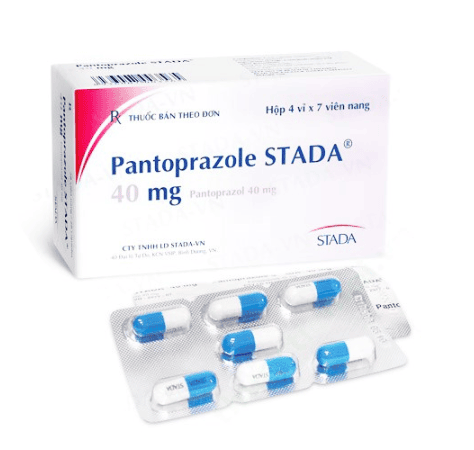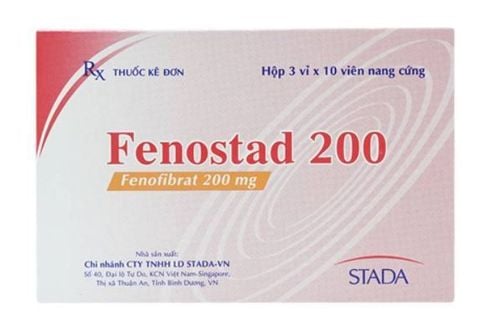This is an automatically translated article.
Posted by Master, Doctor Mai Vien Phuong - Department of Examination & Internal Medicine - Vinmec Central Park International General Hospital
For many people with ulcerative colitis, finding the right diet plan is a process of elimination. There is no one diet proven to help with ulcerative colitis, but some eating plans can help some people with the condition stop their symptoms.
1. What is ulcerative colitis?
Ulcerative colitis (UC) is a type of inflammatory bowel disease (IBD). Inflammatory bowel disease includes a group of diseases that affect the digestive tract.
Ulcerative colitis occurs when the lining of the large intestine (also called the colon), the rectum, or both becomes inflamed. This inflammation creates small sores called ulcers on the lining of your colon. It usually begins in the rectum and spreads upward. It may involve your entire colon.
Inflammation causes the intestines to move quickly and empty the intestines frequently. When the cells on the surface of your gut lining die, sores form. The sores may bleed, discharge mucus and pus.
While this disease affects people of all ages, most people are diagnosed between the ages of 15 and 35. After the age of 50, another small increase in the diagnosis of this disease is seen, usually in men.
2. Low residue diet
The low-residue diet The "residue" in the name of this diet refers to foods that your body can't digest well and will end up in your stool. It is sometimes used interchangeably with the term "low fiber diet".
Low-residue diets are low in fiber, but the two are not exactly the same.
Low fiber foods make it easy for your body to digest. They can help slow bowel movements and limit diarrhea. You can still eat a lot of the foods you normally eat, while keeping your fiber consumption down to about 10 to 15 grams per day.

Your body will still get enough protein, minerals, fluids and salts. But because chronic diarrhea and rectal bleeding can lead to nutrient and mineral deficiencies, your doctor may want you to add a multivitamin or other supplement to your diet.
What you can eat on a low-residue diet:
Milk, cheese, pudding or yogurt Refined white bread, pasta, crackers and dry cereals have less than 1/2 gram fiber per serving Soft and tender cooked meats, such as poultry, eggs, pork, and fish Peanut and fine-grain butters Juices without pulp Canned fruit and apple sauce, excluding pineapple Raw , ripe bananas, melons, cantaloupe, watermelon, plums, peaches and apricots Raw lettuce, cucumbers, zucchini and onions Cooked spinach, pumpkin, seedless squash, carrots, eggplant, potatoes , chickpeas and wax Butter, margarine, mayonnaise, oil, smooth sauces and dressings (not tomatoes), whipped cream and fine condiments Plain cakes, cookies, pies and Jell-O
What you can't eat:
Cold meats Dried fruits Berries, figs, prunes and prunes Raw vegetables not mentioned in the list above Spicy sauces, sauces, pickles and dishes delicious with pieces Nuts, seeds and popcorn Foods and drinks containing caffeine, cocoa and alcohol

3. Diet
The Paleolithic diet, or the classical diet as it is commonly known, takes the human diet back several thousand years.
Its premise is that our bodies were not designed to eat a modern grain-based diet and we would be healthier if we ate more like our hunter-gatherer ancestors.
This diet is high in lean meat, making up at least 30% of total daily calories. Dietary fiber comes from fruits, roots, legumes, and nuts, not grains.
What you can eat on a paleo diet:
Fruits Most vegetables Grass-fed lean beef Chicken and turkey Eggs Nuts Honey What you can't eat:
Potatoes Legumes Cereals Dairy Products Soft drinks Refined sugar Although some people claim to feel better on the palo diet, there is no evidence from clinical trials that it works. used in inflammatory bowel disease. Plus, this diet can lead to deficiencies in vitamin D and other nutrients. If you want to try it, ask your doctor if you need to take a supplement.

Patients should consult a doctor and a nutritionist to find the right diet for their inflammatory bowel disease. If you have a need for consultation and examination at Vinmec Hospitals under the national health system, please book an appointment on the website for service.
Please dial HOTLINE for more information or register for an appointment HERE. Download MyVinmec app to make appointments faster and to manage your bookings easily.
ReferencesCrohn's disease and ulcerative colitis nutrition therapy. (n.d.). uccs.edu/Documents/peakfood/hlthTopics/Crohns%20Disease%20Nutrition.pdf Diet and Inflammatory Bowel Disease . (n.d.). med.umich.edu/ibd/education/diet.html Haskey N, et al. (2017). An examination of diet for the maintenance of remission in inflammatory bowel disease. DOI: 10.3390/nu9030259 Hou JK, et al. (2014). Diet and inflammatory bowel disease: Review of patient-targeted recommendations. DOI: 10.1016/j.cgh.2013.09.063 Kakodkar S, et al. (2017). Diet as a therapeutic option for adult inflammatory bowel disease. DOI: 10.1016/j.gtc.2017.08.016 Mayo Clinic Staff. (2019). Gluten-free diet. mayoclinic.org/healthy-lifestyle/nutrition-and-healthy-eating/in-depth/gluten-free-diet/art-20048530 Mayo Clinic Staff. (2017). Low-fiber diet do's and don'ts. mayoclinic.org/healthy-lifestyle/nutrition-and-healthy-eating/in-depth/low-fiber-diet/art-20048511?reDate=14022019 Special Inflammatory bowel disease diets. (n.d.). crohnscolitisfoundation.org/diet-and-nutrition/special-ibd-diets Ulcerative colitis. (2014). niddk.nih.gov/health-information/digestive-diseases/ulcerative-colitis Ulcerative colitis treatment options. (n.d.). crohnscolitisfoundation.org/what-is-ulcerative-colitis/treatment-options














